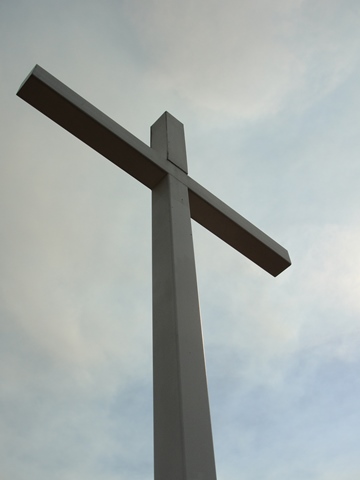KEEP WATCH
Apostasy in the Church Part 8
The True Gospel
By Jim Allen


Single Page/Printer Friendly

Les Feldick is a beloved television Bible teacher from Oklahoma, often telling his study class to turn to 1 Corinthians 15:1-5 for Paul's definition of the true gospel:
Moreover, brethren, I declare to you the gospel...that Christ died for our sins according to the Scriptures, and that He was buried, and that He rose again the third day according to the Scriptures, and that He was seen by Cephas, then by the twelve.After thinking about Les' explanation and about these verses in particular, he is correct but these verses only bring forward a "general truth" about the gospel and not the "entirety" of the gospel.
While the four gospels point forward to the cross, Paul's gospel points backward to the cross and explains why he calls it his gospel. While the "general theme" of the gospel is found in 1 Corinthians 15:1-5, the "heartbeat of the true gospel" resounds from Genesis to Revelation.
It would appear the larger problem for some evangelicals is the tendency to pitch their "tent of understanding" about the gospel on a group of verses without taking into account the deeper truths embedded within those verses. I know it's easy to do because I've done it. It would appear Les believes any Bible doctrine, such as repentance, failing to align itself with the general definition of the gospel as scripted by Paul in 1 Corinthians 15:1-5 is in error and rightly put aside or glossed over as inconsequential and never taught.
As a case-in-point, while both John the Baptist and Jesus said "repent and believe," Feldick says the apostle Paul never taught repentance as a prerequisite to salvation, but as a result of salvation. According to 2 Corinthians 7:9-10, the apostle Paul spoke clearly about repentance preceding salvation; it is a verse that dovetails perfectly into the four gospels. Just to be clear, Paul said that "repentance" is the first step leading to salvation wherein he wrote: "Now I rejoice, not that you were made sorry, but that your sorrow led to repentance. For godly sorrow worketh repentance leading to salvation, not to be regretted..." (2 Corinthians 7:9-10).
In flow with the preceding paragraph, evangelicals encountering conflicting doctrine appear to have what some Bible commentators identify as "cognitive dissonance," which is a fancy way of describing the attempt to bring into balance what appear to be two opposing truths. Theories about cognitive dissonance suggest, generally, that people resolve "conflicting ideas" by changing their mind about which of the two dissonant doctrines is correct.
They reason that both views on the same matter cannot possibly be true and reconcile the difference by dismissing one truth over the other, resulting in confusion and further division in the church. The doctrine of "repent and believe" is that both truths are different sides of the same coin, unique in meaning and different in purpose.
As an example of cognitive dissonance, post 7 of 8 in this series exposed evangelicals who readily dismiss any doctrine not supporting their view of the gospel. These evangelicals talk about believing the gospel but never about human wickedness, the need for recognizing one’s fallen condition, and need for salvation. Why? Because in their minds these doctrines conflict with their watered down, all-positive approach to the gospel. If you think about it, how can we ever come to comprehend the good news of the gospel unless we first come to accept the bad news? The entire eight-part series on Apostasy in the Church is, at best, a snapshot of how pastors, authors, and teachers have taken the gospel of Jesus Christ in directions never intended by the Lord of Glory.
This post is the launching pad for my next series of posts on the true gospel of Jesus Christ that goes beyond 1 Corinthians 15:1-5. Within the new series, the Keep Watch blog will focus on the deeper truths resident within the basic precepts of the true gospel while keeping watch for troublesome doctrines that lead to apostasy and mayhem in the church.

Continue to Page Two
Image Credit: Kersley Fitzgerald
comments powered by Disqus
Published 10-17-11

